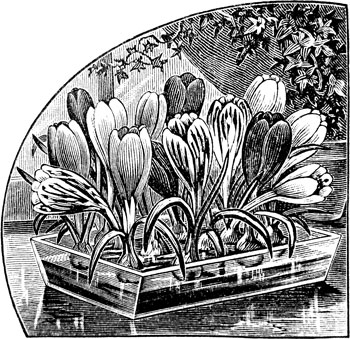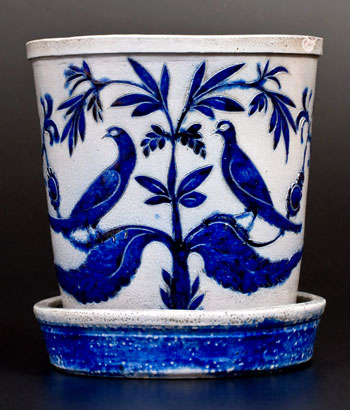
Here’s a cool idea I stumbled upon recently in a 1957 book called Bulb Growing for Everyone.
I’d seen images like this one in catalogs from the late 1800s and early 1900s, but since all sorts of implausible things are pictured in catalogs old and new, I never gave it much thought. But the well-known Dutch bulb-grower Johan Frederik Christiaan Dix explains how it’s done:
“The receptacles in which we place [crocus] must not be so deep as those required for other bulbs, and they require far more attention insofar that a more gradual transition from a dark, cool place to a light, heated room is necessary.
“They should not be taken out into the light until the noses are fully two inches long and . . . they must on no account be brought into a hot temperature, otherwise the bulbs will shrivel up. So keep them cool until the buds rise from among the leaves. This is the moment to bring them into the room or onto a warm windowsill.

“Most crocuses cannot be expected to flower before the end of January. . . . There is one exception, however, the crocus ‘Vanguard’ which begins to flower as early as New Year’s Day, and even at Christmas.”
We plan to give it a try – with ‘Vanguard’, of course. We’ll start the bulbs as soon as possible because they need months to root and grow, and we’ll store them in the refrigerator to make sure they stay below 48° but above freezing. If you try it, too, please let us know how it goes!
If you’d rather force something easier – from fragrant hyacinths to snake’s-head fritillaries – see our complete how-to at OldHouseGardens.com/ForcingBulbs.


















